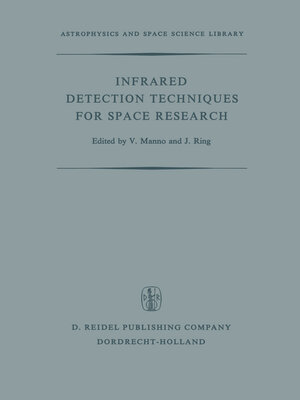Infrared Detection Techniques for Space Research
ebook ∣ Proceedings of the Fifth Eslab/Esrin Symposium Held in Noordwijk, The Netherlands, June 8–11, 1971 · Astrophysics and Space Science Library
By V. Manno

Sign up to save your library
With an OverDrive account, you can save your favorite libraries for at-a-glance information about availability. Find out more about OverDrive accounts.
Find this title in Libby, the library reading app by OverDrive.



Search for a digital library with this title
Title found at these libraries:
| Library Name | Distance |
|---|---|
| Loading... |
Infrared Astronomy is a relatively new subject but it has already radically altered our ideas about astronomical sources. Recent progress in this subject is the result of improved detection techniques, particularly the use of detectors at liquid helium temperatures. Unfortunately, the terrestrial atmosphere greatly restricts Infrared astronomers by allowing them to detect radiation only in narrow transmission win dows and by presenting a foreground emission which limits the faintness of observable sources. It is only from aircraft or balloon altitudes that we can begin to observe faint sources over the complete range of wavelengths between the visible and the radio regions. Few such observations have yet been made and none from satellites, although the latter vehicle will offer complete freedom from atmospheric effects. New developments and intermediate steps will be required before the ultimate aim of flying in space can be achieved. It is not surprising therefore that the Fifth Eslab/Esrin Symposium should deal with this problem. This book contains the proceedings of the Symposium and faithfully records all discussions. The Symposium covered the present situation and future perspectives of IR techniques. International leaders in the field reviewed the results to date and the possible developments in telescope systems, detectors, cryogenics, filters, and interferometers. Individual con tributions were made by European and U. S. scientists in each of these fields.







